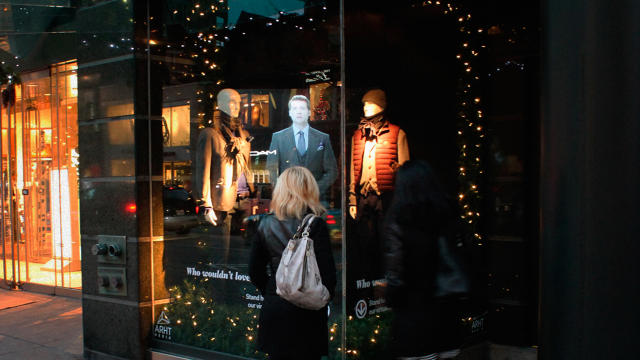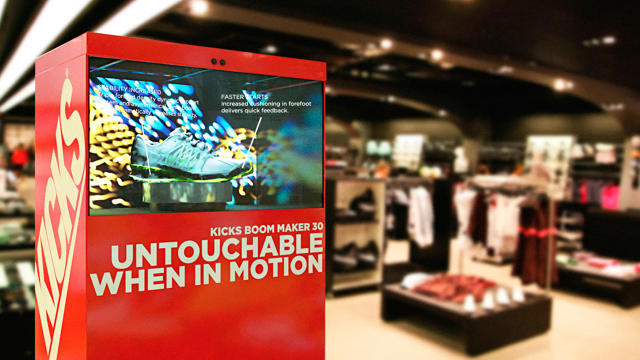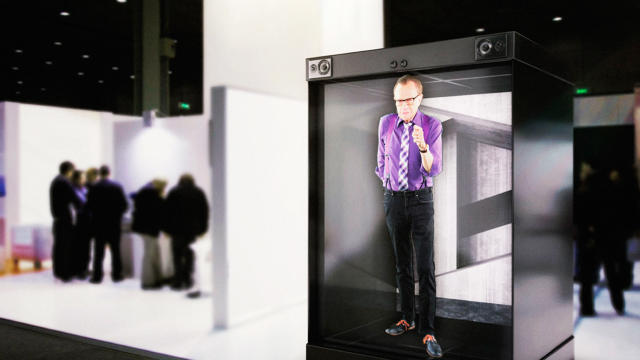Smaller And stuffed with Holograms: The Storefront Of the next day
As no much less a source than again to the long run estimated, 2015 is also the year a hologram grabs your bucks back from Amazon.
February 20, 2015
Mannequins have done their job in store home windows for over a century. however as brick-and-mortar outlets increasingly more combat for consideration, they’re due for a digital improve. namely, a speaking human hologram that greets you and asks if you happen to’d like to purchase the designer sweater she’s carrying. You say yes, and she offers you a discount you scan in your mobile phone to redeem in-store or on-line.
the speculation of shopping with a hologram alongside you shouldn’t be a delusion. ARHT Media, a startup founded in 2012, has celebrity backers like Larry King and co-founder Paul Anka. the company says its HumaGrams—a patent-pending technology—can be utilized for digital signage, promoting, convention shows—and, sure, the aforementioned store display window. ARHT just lately partnered with Canadian retail chain Harry Rosen to display a human hologram named “Vincent” right through the 2014 vacation procuring season.

A handful of companies now are developing holographic and augmented truth applied sciences to interact shoppers in additional personalized methods. Now that holograms can have been used to resurrect useless musicians like Tupac and Michael Jackson, corporations like Ford, Disney, and bet have used it to advertise new merchandise. eBay just lately sold PhiSix, an organization that develops 3D fashions of apparel for digital dressing rooms.
Paul Duffy, the CEO of holographic platform ARHT Media, says holograms aren’t simply the latest vivid gadget for firms to dazzle shoppers. They’re a necessity if brick and mortars want to compete.
“individuals are experiencing the proverbial death via a thousand cuts with teams like Amazon within the last a couple of years,” Duffy says. “And it’s handiest going to continue.”
Holograms up to now were too dear for big scale applications, however experts say that is changing because the tech concurrently becomes more developed and value-effective.

considering that their beginnings within the ’60s, holograms have had just a few industrial incarnations. In 1972, Cartier projected a hologram of a jeweled hand from its Fifth Avenue store window out onto the sidewalk to attract shoppers. but nowadays, the technology remains to be extra widespread in industries outdoor of retail, akin to well being care, museums, armed forces, and safeguard.
“the problem is that as customers and retail, we don’t pay very much. To get this type of expertise, it in reality needs to be very price-effective,” says Daniel Smalley, an engineering professor at Brigham younger university who has created coloration holographic video displays.
David Rose, CEO of PRSONAS, a North Carolina startup that creates interactive customer service holograms, says companies are more excited about holograms as a result of they provide valuable information about shopper habits.
“We’re gathering actual-time analytics from all these customer interactions,” Rose says. “If a model can analyze what their buyers’ preferences and interests are, it’s a a lot better technique to give them better service and products.”
The growing box of proximity advertising—the place companies allow consumers to buy products on the point of sale through their cell phone—additionally may have an impact. the global market for proximity marketing is anticipated to succeed in $2.three billion by using 2016. corporations are currently the use of QR codes and beacons to power these experiences, however ARHT Media, which is pilot testing with several purchasers, is betting holograms may also take hold of a slice of the real-time commerce pie.
the first sale to be made, though, is to retailers who, specialists say, can be cautious sooner than they commit their most valuable commodity—bodily in-store house—to hologram displays.
“at the moment you indubitably get that wow effect [with the technology], but it surely must have a use beyond this wow impact,” says Matt Szymczyk, CEO of Zugara, an augmented reality company. “When shops start seeing constant comments that these options have started rising conversions, then we’ll see more proliferation of them. right now, they’re in trial and pilot mode.”

both PRSONAS and ARHT Media are launching pilot packages early this 12 months. PRSONAS already has labored with pharmaceutical and high-tech corporations for alternate displays and experience shows. the company continues to be figuring out its pricing version, but currently the expertise prices $9,500 apiece, with an additional monthly service rate for the hardware, device and analytics. PRSONAS plans to launch an expansive pilot take a look at with an important retailer in February, Rose says.
ARHT Media, which fees a license charge and one-time charge to create ad content for its HumaGrams, is at present constructing developed holographic display know-how to be able to be in the marketplace in the coming months. Duffy, its CEO, says there will be a handful of these installations in the course of the 2015 vacation season, and he expects more in-retailer implementations in 2016.
The holograms may come in keeping with the evolution of brick-and-mortar retailers. “retailers are changing into smaller with a a lot higher digital presence,” says Ivailo Jordanov, a retail analyst and co-founding father of Styloko, a shopping discovery engine. “Over time, bodily shops will simply turn into showrooms where holographic technology will probably be instrumental to transforming the retail expertise.”
![]()
fast company , read Full Story
(117)














